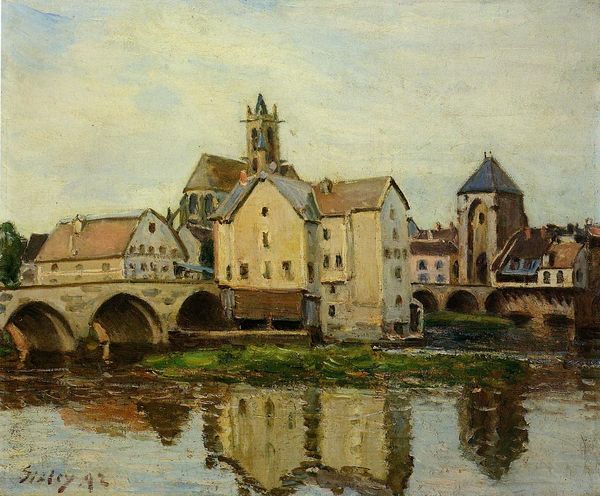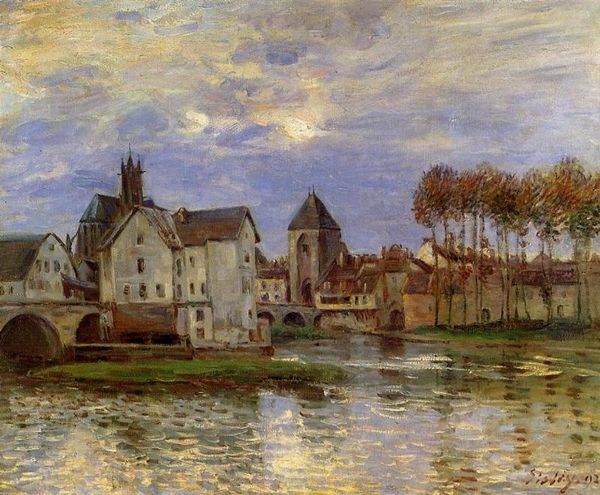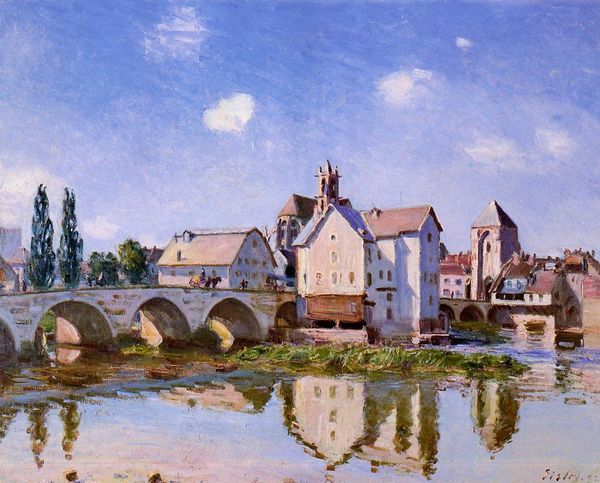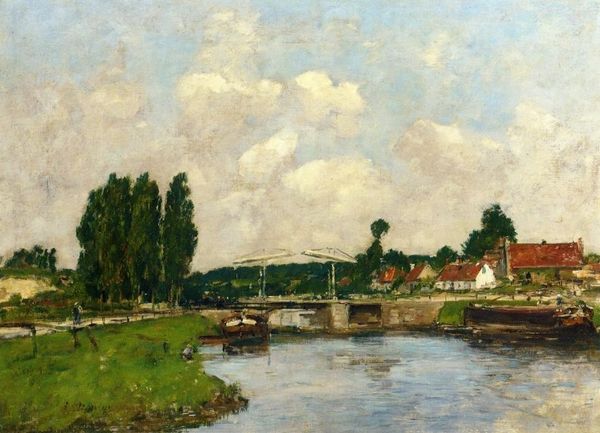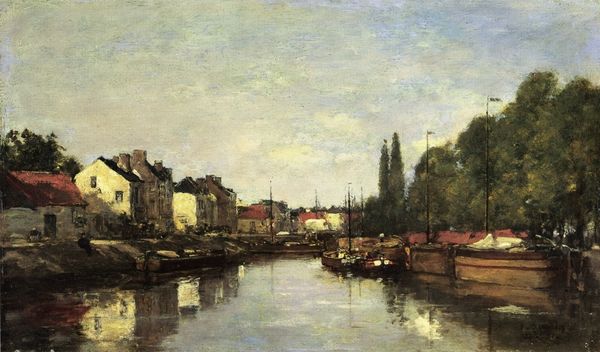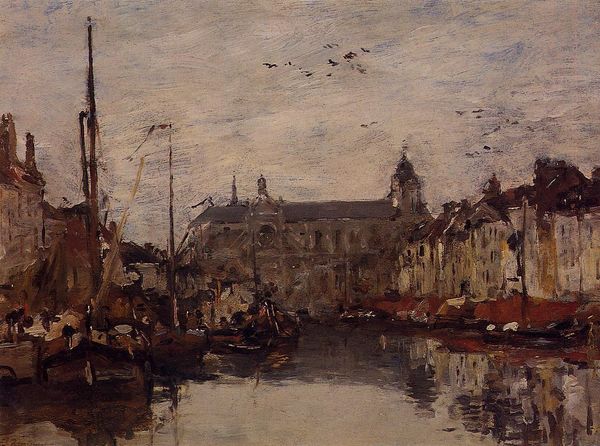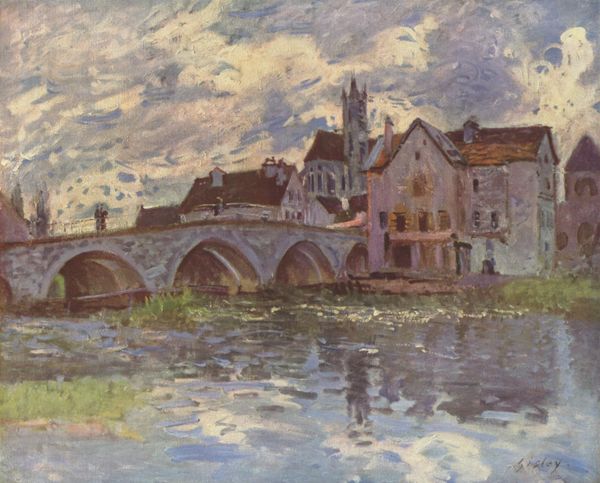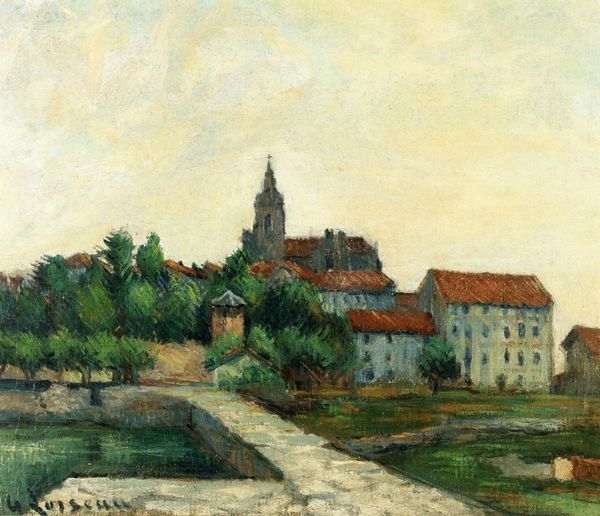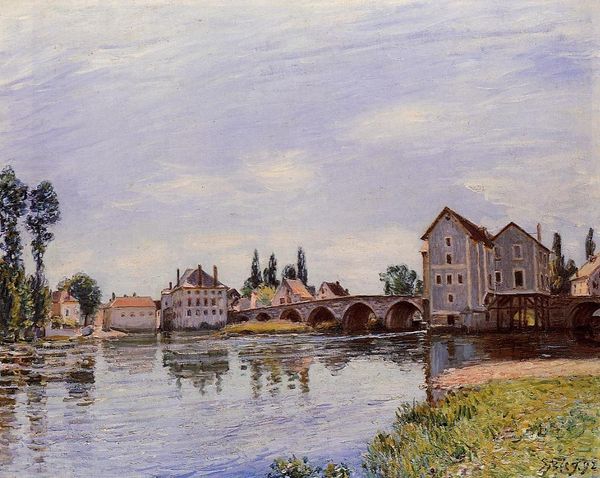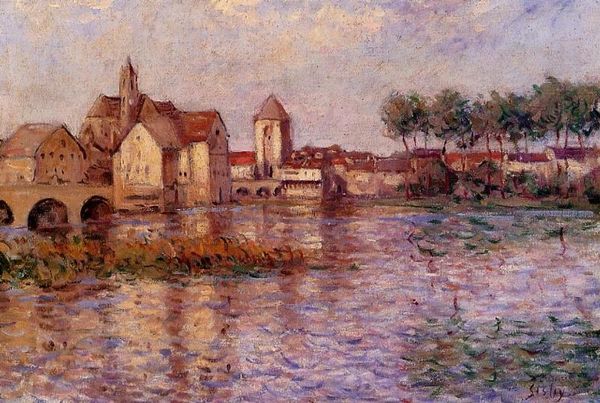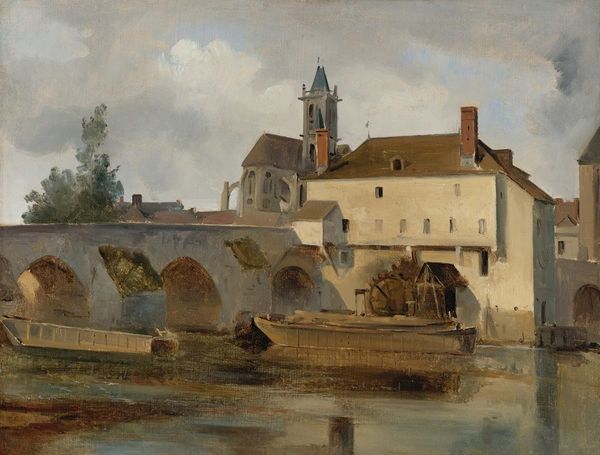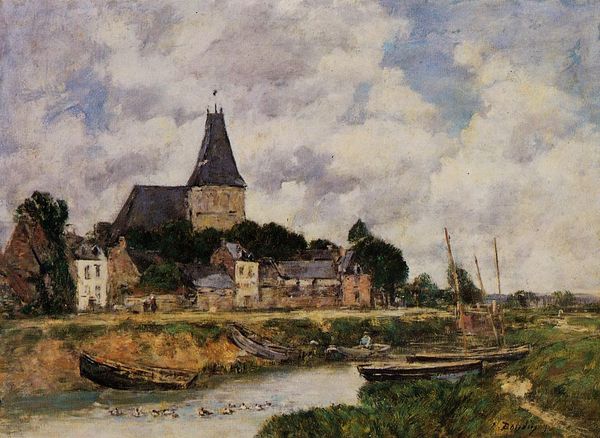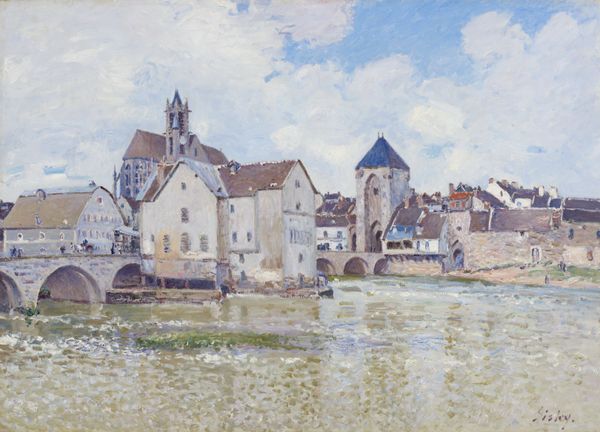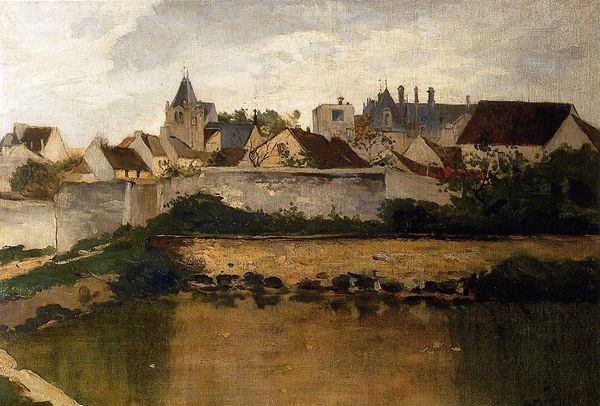
Dimensions: 33 x 41 cm
Copyright: Public domain
Curator: Alfred Sisley created this oil on canvas, called "The Moret Bridge", in 1892. It belongs to the Impressionist movement. Editor: My first thought is: hazy. It feels like looking at a memory through a gauzy curtain. All those warm browns and creams sort of melt together. It gives you a nice fuzzy feeling. Curator: That feeling aligns with Impressionism’s key aims, doesn’t it? They moved away from rigid realism toward capturing the subjective impression of a scene. Sisley focused on light and atmosphere, on the sensory experience itself. Editor: Absolutely. I mean, look at how the buildings are reflected in the water – it's like a slightly smudged mirror image. It suggests movement, the ephemeral nature of reality, you know? Makes me think about how we construct memory and history. Curator: Right. Moret-sur-Loing, the location depicted, wasn’t merely a place for Sisley. It was where he spent the last years of his life, and so one might interpret his consistent return to the landscape around Moret and its bridge as representing his attachment and evolving relationship with the area. Editor: And the bridge itself—a symbol of connection, a link between different points. What's striking is the bridge doesn’t just connect places physically, but it also links different eras. There's the medieval architecture blended with this burgeoning modern style. Curator: Precisely. This era, with its industrial expansion, was obviously one of intense social change. Consider the perspectives, too, as some critics suggest the subdued palette echoes the melancholic tone possibly mirroring Sisley's struggles with poverty and lack of recognition. Editor: True, that tension hangs in the air a bit when you consider the idyllic scene. What do you take away from Sisley’s view? Curator: Sisley provides an image in “The Moret Bridge” which allows the viewer to consider not just an artist representing their surrounds, but invites questions of historical place making, change and identity. Editor: Yeah. This one's got that thing—you could just dive right into it. It invites you to step into a memory of place, its light, and think.
Comments
No comments
Be the first to comment and join the conversation on the ultimate creative platform.
